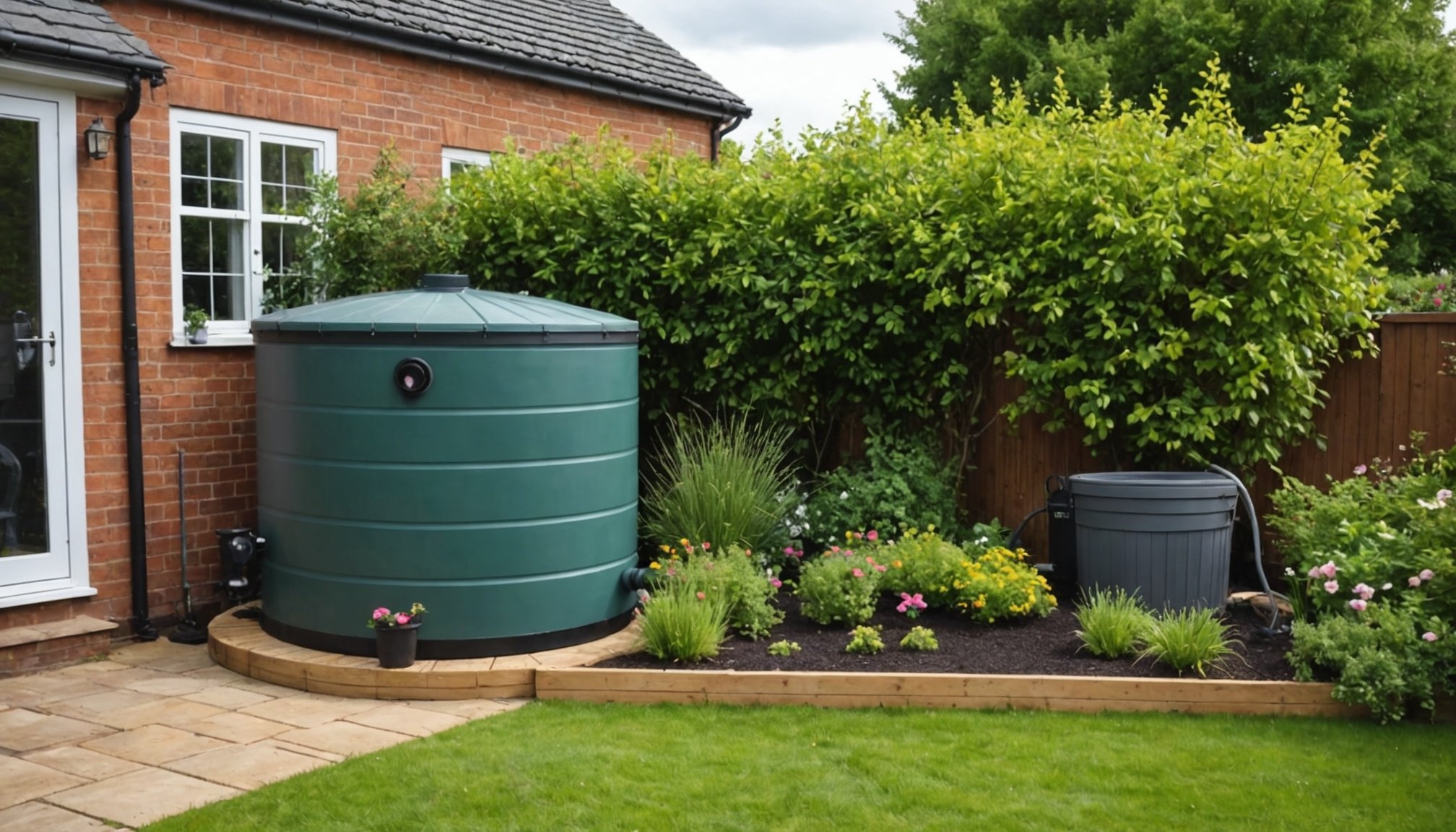Rainwater harvesting is an environmentally friendly solution for UK gardens, offering sustainable benefits for both your plants and the planet. By tapping into one of our most abundant resources, you can reduce water bills while nourishing your garden. This guide walks you through the essential steps: selecting the right system, setting it up, and maintaining it efficiently. Let's transform your outdoor space into a thriving oasis, all while embracing eco-conscious gardening practices. Your garden deserves this upgrade!
Overview of Rainwater Harvesting
Rainwater harvesting is the collection and storage of rainwater for future use, primarily for gardening and irrigation. This practice is not only environmentally friendly but also economically beneficial, as it reduces dependency on mains water supply. Understanding the basics of rainwater harvesting can lead to efficient garden water management and conservation of natural resources.
A lire aussi : Designing a Secure and Fun Backyard Play Zone for Kids in the UK: Essential Tips and Ideas
The benefits of rainwater collection are numerous. For gardeners, it offers a sustainable water source during dry spells, ensuring plants remain hydrated without increasing water bills. Additionally, using rainwater can improve plant health, as it is free from chemicals typically found in tap water, such as chlorine.
In the UK, several systems are commonly employed for rainwater harvesting. These range from simple barrel systems that collect water from rooftops to more sophisticated underground tanks with filtration systems. Such systems can be tailored to fit different garden sizes and water needs, making them accessible to a wide range of households.
Sujet a lire : Transforming Your Garage into a Legal Living Space: A Comprehensive Guide for Homeowners in the UK
By adopting rainwater harvesting, gardeners can contribute to environmental sustainability while enjoying the practical benefits of having a reliable water source. This approach not only supports garden water management but also promotes a greener lifestyle.
Legal Considerations in the UK
When it comes to rainwater harvesting in the UK, understanding legal requirements is crucial. The UK regulations on rainwater harvesting are generally supportive, but there are specific legal requirements to consider.
Overview of Relevant UK Laws
In the UK, rainwater collection is largely unregulated, meaning no special permits are typically needed for domestic use. However, if the system is intended for non-domestic purposes, it might be subject to more stringent regulations. It's essential to check with local authorities to ensure compliance with any specific regional requirements.
Necessary Permits or Registrations
For most household systems, no formal registration is required. However, if you plan to install a large-scale system, especially for commercial purposes, you might need to seek guidance from local councils or environmental agencies. They can provide information on necessary permits or any potential impact assessments required.
Responsibilities Regarding Water Quality and Usage
While collecting rainwater is generally permissible, users are responsible for ensuring the water quality is suitable for its intended use. This involves maintaining the system to prevent contamination and ensuring the water is safe for any planned applications, such as irrigation. Understanding these responsibilities helps ensure legal compliance and promotes safe water usage.
Planning Your System
When designing a rainwater harvesting system, it is essential to begin with a thorough site assessment. This involves evaluating your garden's water needs, which can vary significantly based on plant types, soil conditions, and climate. Understanding these factors will help in tailoring a system that meets your specific requirements.
Next, consider the site selection carefully. The location of your rainwater harvesting setup influences its efficiency. Ideally, choose a spot with maximum roof runoff potential and minimal obstruction from trees or structures. This ensures optimal water collection and reduces maintenance issues.
Once the site is selected, focus on the system design. Efficient layout planning is crucial. Ensure the system includes components like gutters, downpipes, and storage tanks that are proportionate to your garden's size and water needs. Incorporating filtration systems can enhance water quality, making it suitable for various uses.
Remember, the goal is to create a sustainable system that not only conserves water but also integrates seamlessly into your garden's landscape. By following these planning guidelines, you can develop a rainwater harvesting system that is both effective and environmentally friendly.
Selecting Materials and Components
Choosing the right rainwater harvesting materials is crucial for an effective system. The selection of storage tanks plays a significant role, with options including plastic, metal, and concrete. Plastic tanks are lightweight and resistant to corrosion, making them easy to install and maintain. However, they may degrade under prolonged sunlight exposure. Metal tanks offer durability but can be prone to rust if not properly coated. Concrete tanks provide excellent longevity and stability but require more effort and cost for installation.
For maintaining clean water, filtration systems are essential. Options range from simple mesh filters to advanced multi-stage systems. Mesh filters are cost-effective, ideal for removing large debris like leaves. Multi-stage systems offer thorough purification, removing finer particles and potential contaminants, ensuring the water is safe for use.
Additional components enhance system efficiency. Pumps are vital for transporting water from storage tanks to the garden, ensuring adequate pressure. Diverters help manage overflow during heavy rainfall, directing excess water away from the storage system to prevent flooding. Selecting the right materials and components is key to creating a reliable and efficient rainwater harvesting system that meets your garden's needs.
Step-by-Step Installation Process
Embarking on the journey of installing a rainwater harvesting system can be both rewarding and environmentally beneficial. Before diving into the process, there are some preliminary steps to ensure a smooth installation. Begin by assessing your garden's water needs and site conditions to tailor the system accordingly.
Preliminary Steps Before Installation
Ensure you have all necessary tools and materials ready. This includes storage tanks, gutters, downpipes, and filtration systems. Check local regulations to confirm compliance with any requirements.
Detailed Installation Procedure for Key Components
Start with the gutters and downpipes, ensuring they are securely attached and positioned to direct water efficiently into the storage tank. Next, install the storage tank, ensuring it is placed on a stable, level surface. Connect the downpipes to the tank's inlet, incorporating a filtration system to maintain water quality.
Safety Precautions and Best Practices
Safety is paramount during the installation process. Use ladders safely when attaching gutters, and wear protective gear to avoid injury. Ensure all components are securely fastened to prevent leaks and system failures. Following these installation tips will help create a robust and efficient rainwater harvesting system that meets your needs.
Maintenance and Troubleshooting
Ensuring the efficiency of your rainwater harvesting system involves regular maintenance and quick resolution of any issues. Regular tasks include cleaning gutters and filters to prevent blockages. This not only maintains water flow but also ensures water quality. Inspect storage tanks for cracks or leaks, and check pumps for optimal performance.
Common Issues
Common issues in maintaining rainwater harvesting systems include clogged filters, algae growth, and pump malfunctions. Clogged filters can reduce water flow, so ensure they are cleaned regularly. Algae growth in tanks can be a problem, particularly in sunlight-exposed systems. Use opaque tanks or add algaecides to manage this. Pump issues may arise from debris or mechanical faults, requiring immediate attention.
Troubleshooting Tips
For troubleshooting tips, start by examining the system for visible signs of wear or damage. Replace any worn-out parts promptly. If water flow is reduced, check for blockages in the gutters or downpipes. For persistent issues, consider consulting a professional. They can provide a thorough inspection and recommend solutions, ensuring your system remains efficient and reliable.
Environmental Benefits of Rainwater Harvesting
Rainwater harvesting offers significant environmental impact, enhancing sustainability and promoting water conservation. By collecting and utilising rainwater, this practice supports the health of local ecosystems. It reduces the demand on natural water sources, allowing rivers and lakes to maintain their ecological balance. This is crucial in regions where water scarcity threatens biodiversity.
Moreover, harvesting rainwater contributes to broader water conservation efforts. It decreases the reliance on municipal water systems, which often draw from distant sources, reducing energy consumption and carbon emissions associated with water transport and treatment. This makes rainwater harvesting an essential component of sustainable living, aligning with global conservation goals.
Another vital benefit is the reduction of runoff and flood risks. By capturing rainwater, the volume of water flowing into storm drains is diminished, lessening the likelihood of urban flooding. This not only protects infrastructure but also prevents pollutants from being washed into natural water bodies, preserving water quality.
In summary, rainwater harvesting is a practical solution for individuals and communities aiming to enhance their environmental impact. By incorporating this practice, you contribute to sustainability and play a role in vital water conservation efforts.
Cost Estimates and Budgeting
Understanding the rainwater harvesting system costs is crucial for effective financial planning. Initial expenses vary based on the complexity and size of the system. For a basic setup, such as a barrel system, costs may range from £50 to £200. More sophisticated systems with underground tanks and filtration can start from £1,000 and go upwards, depending on capacity and technology.
When planning your budget, consider these budgeting tips:
- Prioritise essential components: Ensure you allocate funds for high-quality storage tanks and filtration systems, as these are vital for system efficiency.
- Plan for maintenance costs: Regular upkeep is necessary to ensure longevity, including cleaning filters and inspecting tanks.
- Consider potential rebates: Some regions offer incentives or rebates for sustainable practices, which can offset initial costs.
Despite the upfront investment, the long-term savings are substantial. By reducing reliance on municipal water, you can significantly lower water bills. Moreover, using harvested rainwater promotes sustainability, contributing to environmental conservation. A well-planned financial strategy ensures that your rainwater harvesting system is not only cost-effective but also a valuable addition to your household.
FAQs and Additional Resources
Navigating the world of rainwater harvesting can raise several questions. Here are answers to some common queries and resources to further your understanding.
Common Questions About Rainwater Harvesting
What is the primary benefit of rainwater harvesting? The main advantage is its ability to provide a sustainable water source, reducing reliance on mains water and lowering water bills.
Is rainwater safe for all garden plants? Yes, as it is free from chemicals like chlorine, which are present in tap water, making it ideal for plant health.
Do I need a large garden to benefit from rainwater harvesting? No, systems can be tailored to fit any garden size, from small barrel systems to larger underground tanks.
Further Reading and Resources for Gardeners
For those looking to dive deeper, numerous online communities and forums provide valuable insights and support. Websites such as the Royal Horticultural Society offer guides and tips on integrating rainwater systems into your garden.
Suggested Suppliers and Service Providers in the UK
Several UK-based companies specialise in rainwater harvesting systems. They offer a range of products and services to suit different needs, ensuring you can find the right solution for your garden.











